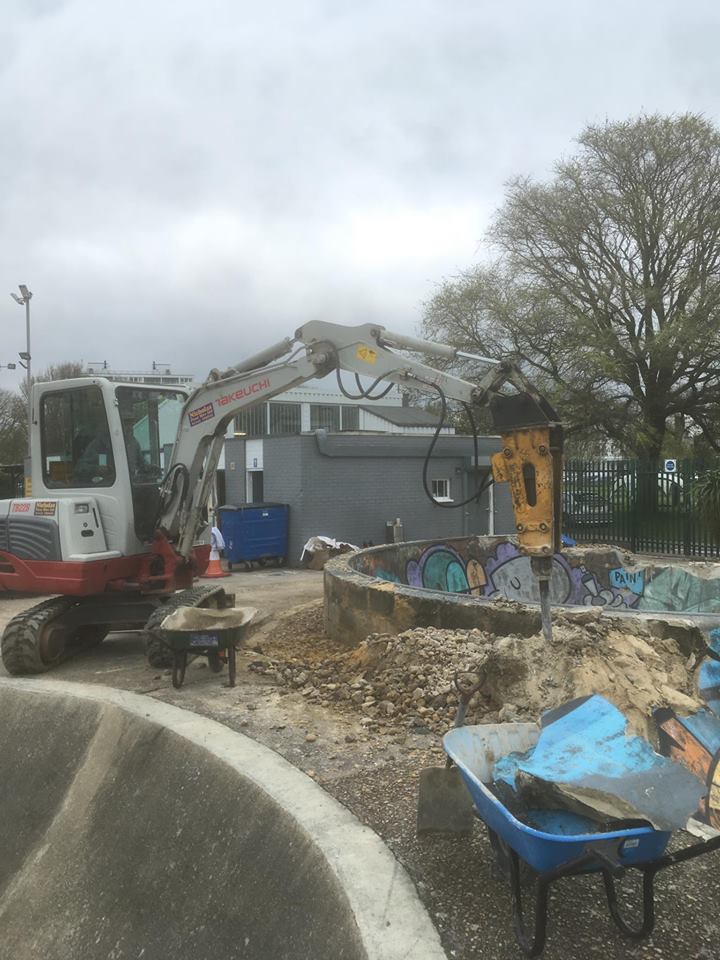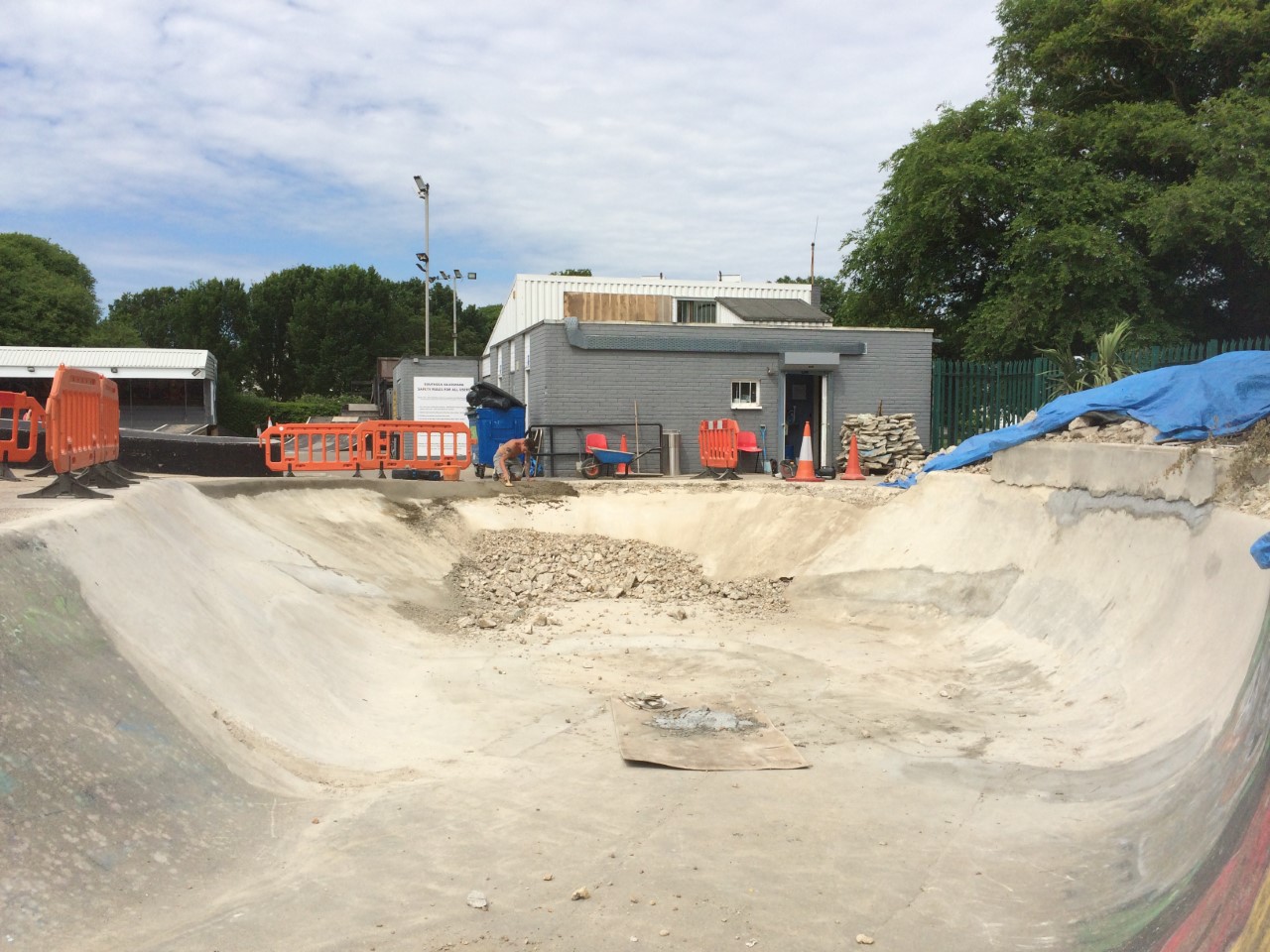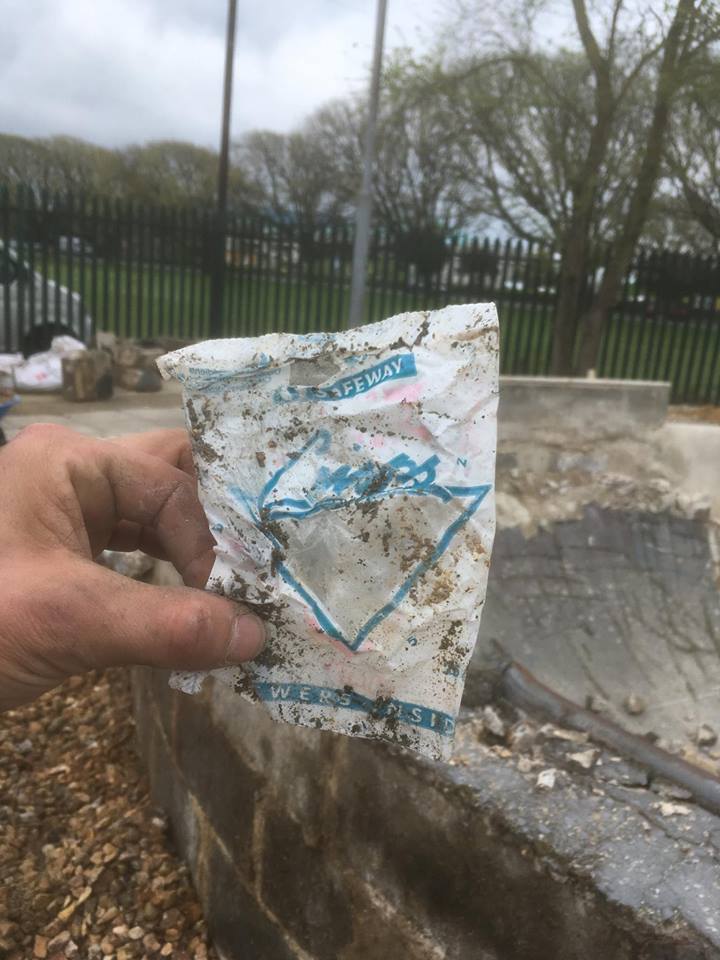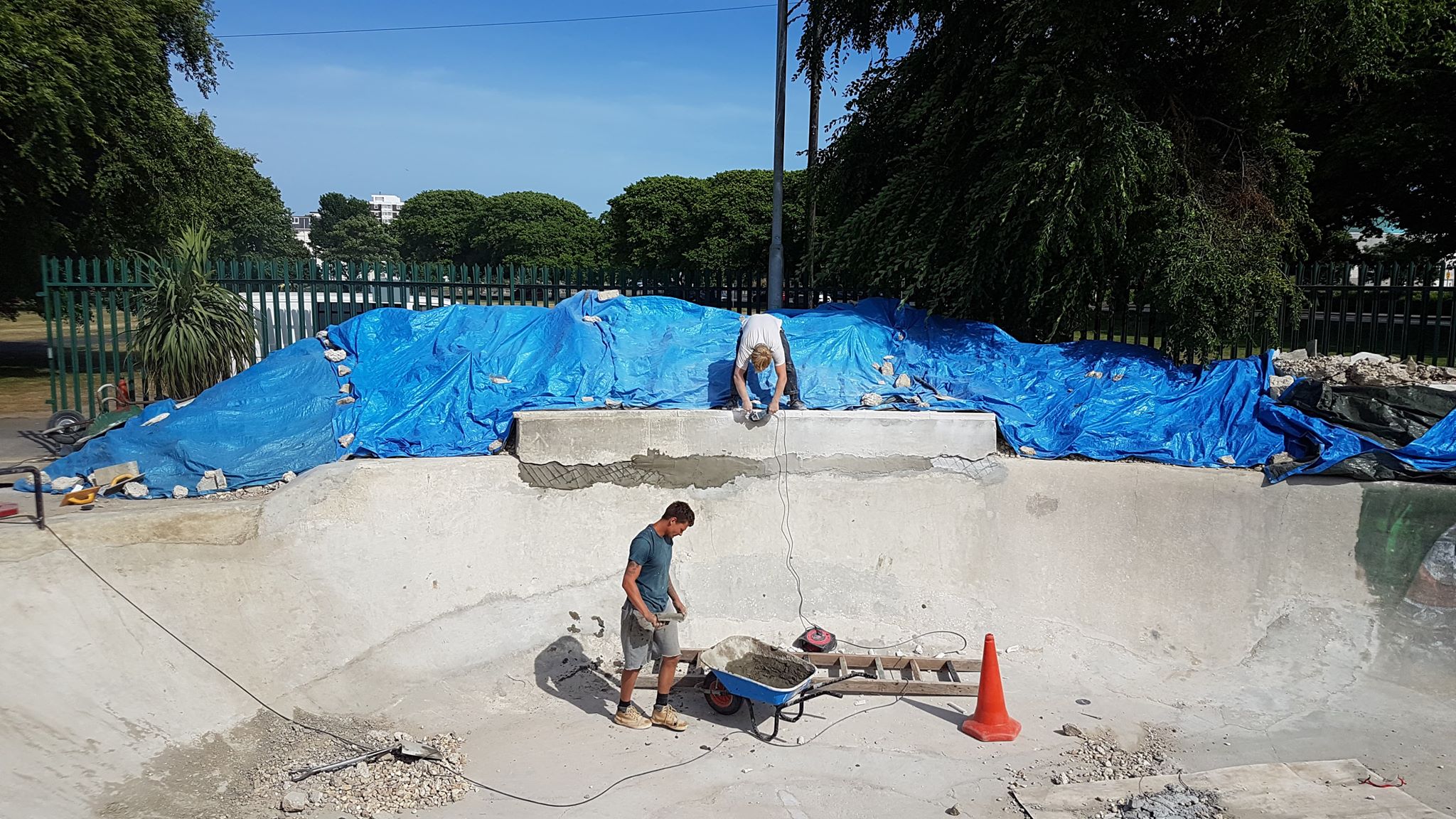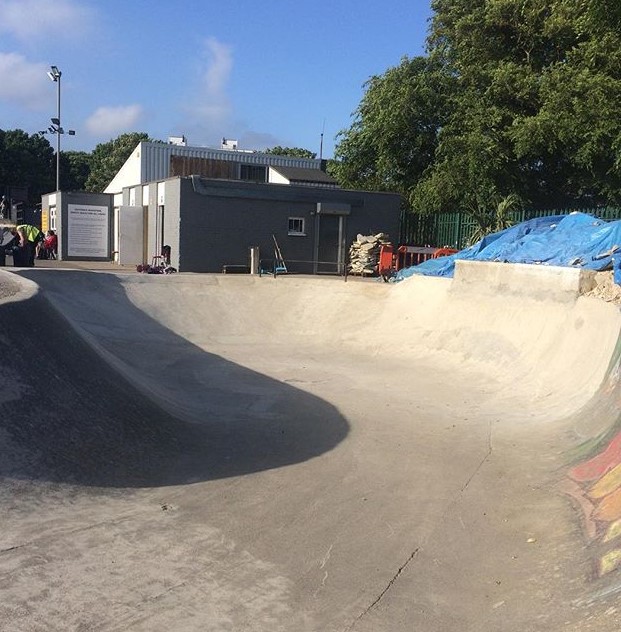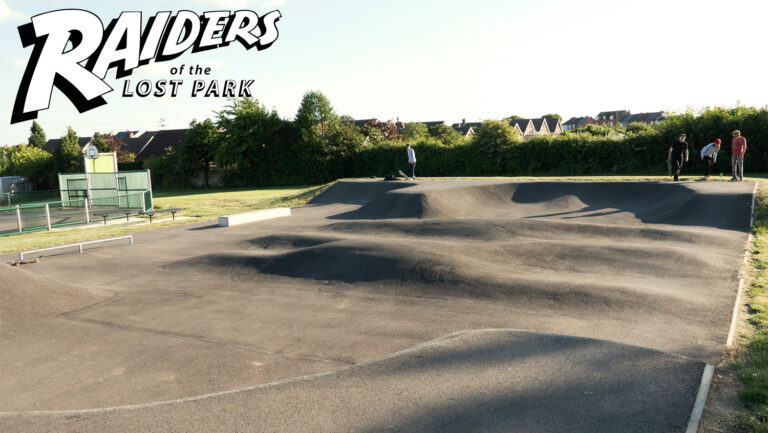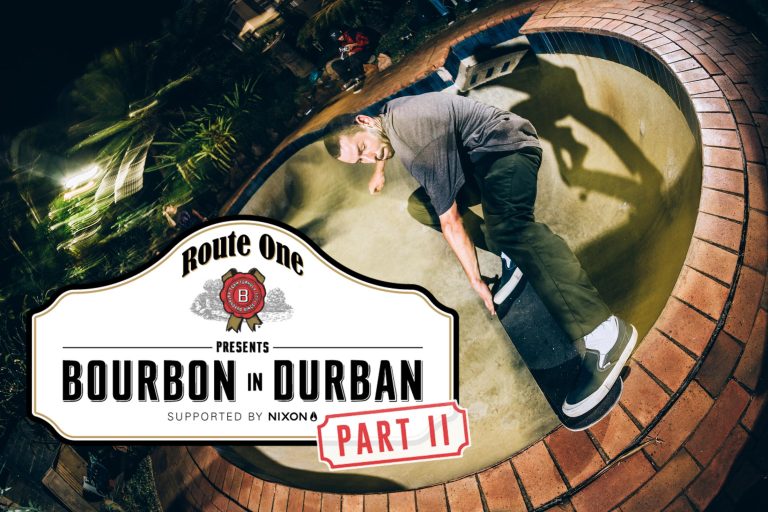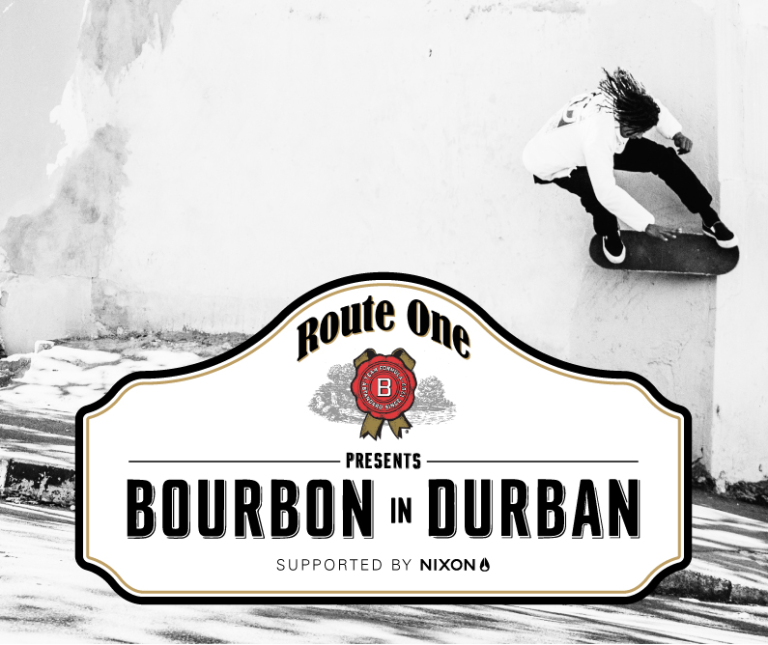As you may already be aware if you saw our recent feature on the UK Vert Series Southsea Shut Up and Skate contest, Southsea’s 40 year old concrete skatepark has recently had a face-lift thanks to the efforts of some of the locals working under the banner of The Duffnell Project.
With Southsea skatepark celebrating its 40 year anniversary this year, we were truly stoked to see this genuinely grass roots endeavour, (led by locals Sam Tuffnell and Dan Dyer), resurrect the original concrete features (built back in 1978) from their previous state of crusty decrepitude into something that can finally be used by the locals without the need for 78A soft wheels.
We caught up with Sam Tuffnell to get a little insight into this restoration project and to find out what inspired them to bring one of the UK’s oldest and most infamous Concrete Dinosaurs back from the brink of extinction.
Read on to find out more and then go follow them on Instagram @the_duffnell_project to keep up to date with their ongoing project and to get involved yourselves.
Big ups all round!
Photos courtesy of Sam Tuffnell

Can you give everyone reading a little bit of back story in terms of your own relationship with Southsea skatepark please?
As far as our history and relationship with Southsea skatepark goes, I (Sam) discovered the park in 1992 as a small 10-year-old peering through the fence and seeing Southsea legend John Goodfellow skating the then quite freshly built spoon bowl and instantly being inspired. Dan became a local about 10 years later after seeing us rolling about there and instantly fell in love with the park. We both would’ve loved to have experienced the freshly constructed park back in 1978 when it opened but unfortunately neither of us had been born. In old videos and photos it looked like an amazing era to be a part of, as well as it being the birth of somewhere so many people would grow to call home!
What are some of your favourite memories from over the years in terms of events and what have you at the park? It’s seen some pretty serious visitations and demo’s over the last four decades…
I am aware of the Bones Brigade demo on the old blue vert, which stands as a fond memory for many of the older locals that I’ve spoken to, but again, that was way before my time. After that I think of the King of Concrete BMX comps and the Southsea Inline comps, which were annual events to always look forward to, whether it was seeing legends from around the world smashing it, or partaking in them ourselves, the atmosphere was something else! It would’ve been rad to have been around during the original 1980’s ‘Shut Up And Skate’ comps too, it seems that the legacy of those has encouraged so many big names to visit the park over the years.
In the minds of most people who were skating back in the 80’s – Southsea is forever associated with the Abrook brothers – lots of their coverage was from there, they started the Shut Up and Skate contests etc, etc. Are Mark or Barry still around? One of them moved to Texas as far as I know – do you ever see either of them?
Growing up in the park, I used to watch various generations of skaters destroy it: I’d say Barry Abrook, Gary Lee, Ian Harper and the Hate Portsmouth/Love Southsea lot stood out for me. I have seen Barry and Gary session the vert in the recent past actually, along with other faces now the ‘Shut Up And Skate’ series is back, which is real cool!
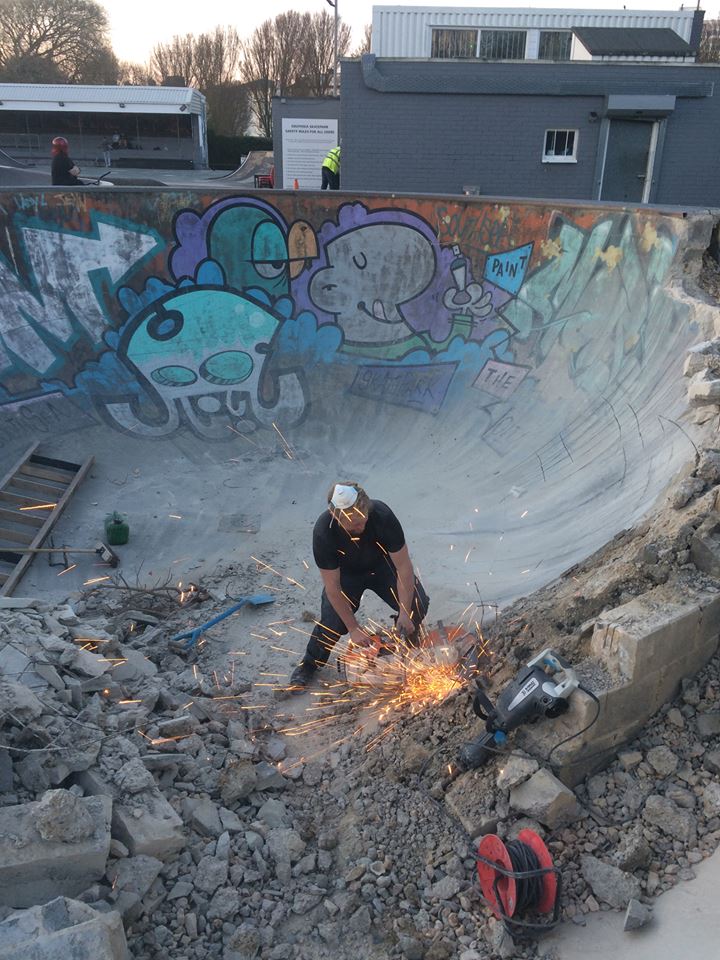
Southsea is one of only a few 1970’s skateparks that have survived this long – what do you think allowed this to happen? So many others were bulldozed or built over and the land where the park sits must be fairly valuable – why do you think it has remained a fixture for so long?
Southsea has been lucky to survive as a skatepark to this day; it was definitely struggling as a council-run business and was only really held together by the heritage of the UFO looking bandstand that the skatepark was built around originally. Back in the late 1920’s that’s all it was, people used to rollerskate round it in circles like a rollerdisco but with a band instead of a DJ.
I guess the fact that the bandstand holds so much history in itself probably played a part in the skatepark surviving this long.
The council slowly stopped putting any money into the park and it came very close to demolition, but with it becoming a self-sufficient charity, run by the trustees who have worked hard to create events, fund raise and receive donations for maintenance, they’ve managed to keep it afloat.
So, onto matters at hand – what’s the time-frame behind your project and what’s the relevance of the ‘Duffnell Project’ name?
The Duffnell project was an idea from Dan and I, to give the skatepark a birthday present for its 40th anniversary. We’ve always been curious as to what was lying beneath the spoon bowl, but really started talking about doing something in March 2018. That gave us just over 3 months to get the thumbs up from the board and to get stuck in. We knew that the original bowl is loved and is the site of some many fond memories for so many people but weighing up the usage it was getting currently, versus trying to resurrect it and make it more skateable for today’s generations was an easy decision in the end.
The Instagram account name is nothing more complicated than a combo of our surnames: Dyer and Tuffnell and ‘Duffnell’ was our favourite of all the options. The project part is just that; it’s a project, we didn’t know how it was going to turn out or what to expect. It’s on-going too, whether that means repairs, or adding new features. We just wanted it to be skateable for the park’s 40th birthday. The instagram account: @the_duffnell_project shows some of the journey but it’s hard to keep documenting when you’re focusing so much on doing the work.



